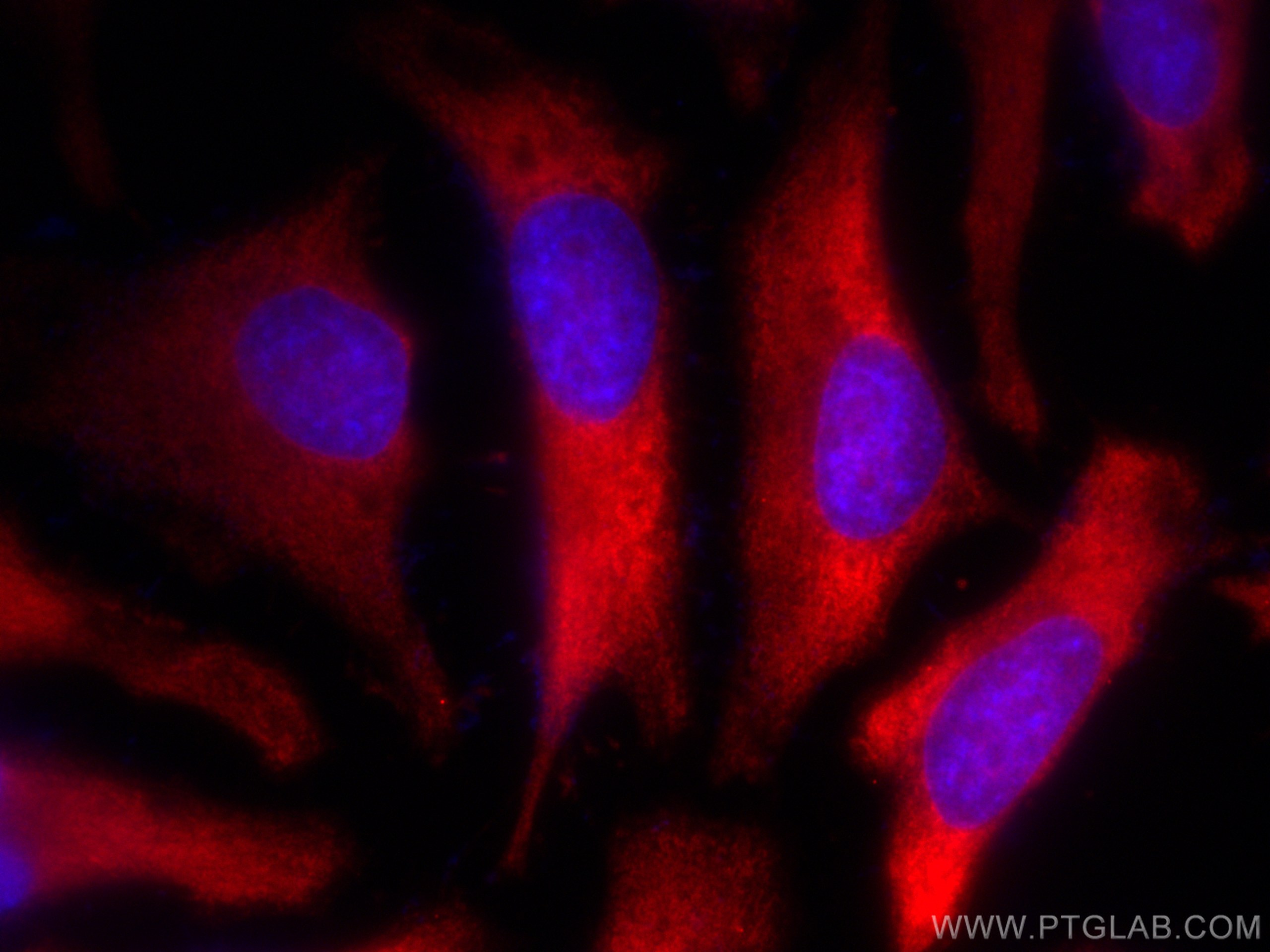验证数据展示
经过测试的应用
| Positive IF/ICC detected in | HeLa cells |
推荐稀释比
| 应用 | 推荐稀释比 |
|---|---|
| Immunofluorescence (IF)/ICC | IF/ICC : 1:50-1:500 |
| It is recommended that this reagent should be titrated in each testing system to obtain optimal results. | |
| Sample-dependent, Check data in validation data gallery. | |
产品信息
CL594-67828 targets TARS in IF/ICC applications and shows reactivity with Human, mouse, rat samples.
| 经测试应用 | IF/ICC Application Description |
| 经测试反应性 | Human, mouse, rat |
| 免疫原 |
CatNo: Ag6614 Product name: Recombinant human TARS protein Source: e coli.-derived, PGEX-4T Tag: GST Domain: 394-723 aa of BC000517 Sequence: ENMFSFEVEKELFALKPMNCPGHCLMFDHRPRSWRELPLRLADFGVLHRNELSGALTGLTRVRRFQQDDAHIFCAMEQIEDEIKGCLDFLRTVYSVFGFSFKLNLSTRPEKFLGDIEVWDQAEKQLENSLNEFGEKWELNSGDGAFYGPKIDIQIKDAIGRYHQCATIQLDFQLPIRFNLTYVSHDGDDKKRPVIVHRAILGSVERMIAILTENYGGKWPFWLSPRQVMVVPVGPTCDEYAQKVRQQFHDAKFMADIDLDPGCTLNKKIRNAQLAQYNFILVVGEKEKISGTVNIRTRDNKVHGERTISETIERLQQLKEFRSKQAEEEF 种属同源性预测 |
| 宿主/亚型 | Mouse / IgG2b |
| 抗体类别 | Monoclonal |
| 产品类型 | Antibody |
| 全称 | threonyl-tRNA synthetase |
| 别名 | TARS, Threonine tRNA ligase, threonyl tRNA synthetase, ThrRS |
| 计算分子量 | 83 kDa |
| 观测分子量 | 83-87 kDa |
| GenBank蛋白编号 | BC000517 |
| 基因名称 | TARS |
| Gene ID (NCBI) | 6897 |
| RRID | AB_2923926 |
| 偶联类型 | CoraLite®594 Fluorescent Dye |
| 最大激发/发射波长 | 588 nm / 604 nm |
| 形式 | Liquid |
| 纯化方式 | Protein A purification |
| UNIPROT ID | P26639 |
| 储存缓冲液 | PBS with 50% glycerol, 0.05% Proclin300, 0.5% BSA, pH 7.3. |
| 储存条件 | Store at -20°C. Avoid exposure to light. Stable for one year after shipment. Aliquoting is unnecessary for -20oC storage. |
背景介绍
TARS (Threonyl-tRNA synthetase), also known as threonine-tRNA ligase or ThrRS, belongs to the aminoacyl-tRNA synthetase family. Aminoacyl-tRNA synthetase (aaRS) catalyzes the specific esterification of an amino acid with the 3'-terminal hydroxyl group of its cognate tRNA. Specificity of aminoacylation catalyzed by aaRSs ensures the accurate translation of the genetic code in the first step of protein synthesis (PMID: 26324710). TARS has some isoforms with the molecular mass of 83, 87 kDa and other MW.
实验方案
| Product Specific Protocols | |
|---|---|
| IF protocol for CL594 TARS antibody CL594-67828 | Download protocol |
| Standard Protocols | |
|---|---|
| Click here to view our Standard Protocols |


